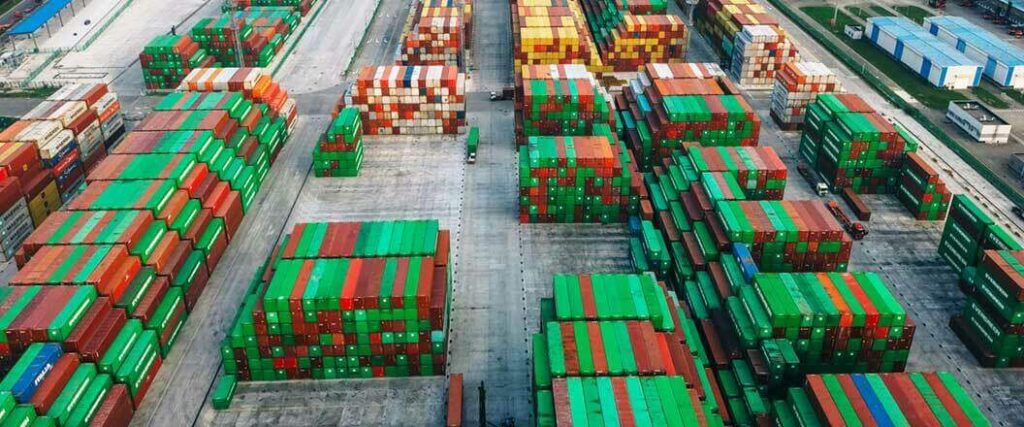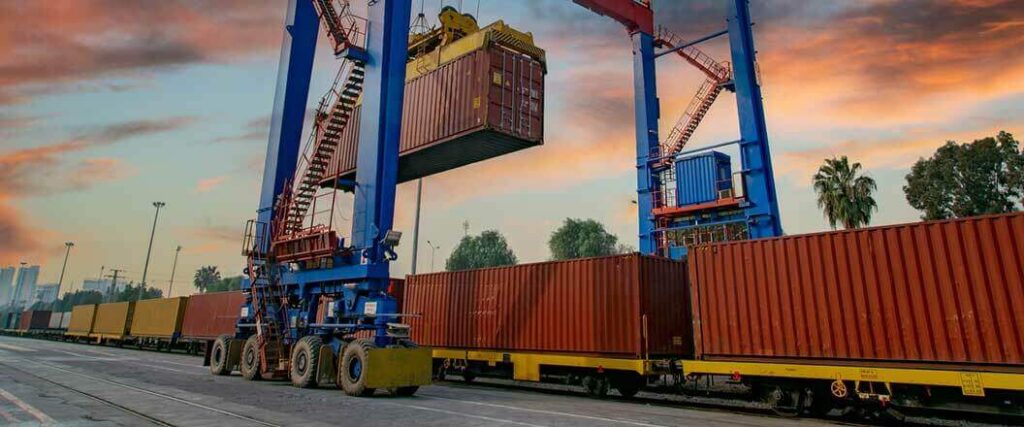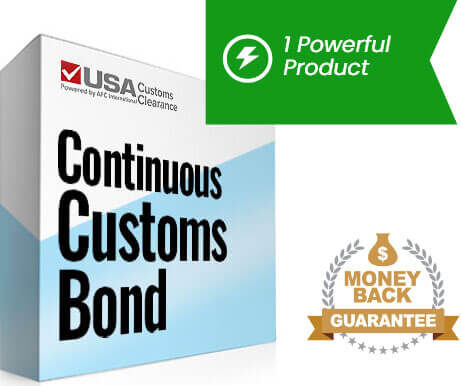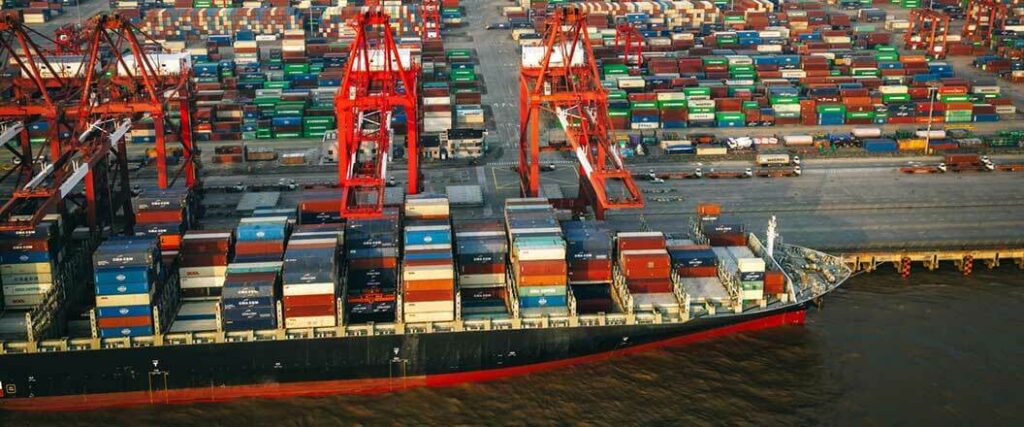
Calculating customs bond amounts can vary based on the type of bond you use. Single entry bonds are typically calculated at $3 to $5 per $1,000. Continuous bonds are calculated by multiplying duties and taxes by 10%. Depending on how much the duties and taxes were, the product is rounded to the nearest $10,000 or $100,000.
As you prepare to import goods, calculating customs bond amounts can appear to be a roadblock for businesses and individuals. These documents are a frequent topic of confusion in the importing community.
Calculating customs bond amounts don’t have to be a headache. We’ll show you how to compute these costs with some useful examples.

A customs bond is a type of surety bond. They’re similar to insurance policies in that they protect the entity that is requiring the bond. Commercial goods valued at more than $2,500 must have a customs bond to clear a U.S. port of entry. In addition, any commodity being imported with federal regulations must also have a customs bond as well.
Importers are often required to pay duties, taxes, and fees to the United States Customs and Border Protection (CBP). By having a customs bond in place, it ensures importers will not default on these fees.
Customs Bonds are required for:
There are two basic types of customs bonds that are used for specific purposes.
A single entry bond can only be used for one shipment, while a continuous version can be used for any number of shipments during an entire year.
Continuous bonds are best for businesses or individuals that import regularly. The costs of several single transaction bonds add up quickly. There is also extra administrative work when using one of these documents for every import.
Therefore, A single entry bond will best serve individuals or businesses that only import on an infrequent basis.
Not sure whether you need a customs bond? Check out our article on what a what a custom bond covers.

Calculating single entry and continuous bonds can be difficult. In this section, we’ll begin by explaining the math that’s used to figure out how much they cost.
If the duties, taxes, and fees of the previous or next 12-month period is higher than $1,000,000, continuous bond amounts will have to be rounded up to the nearest $100,000 instead.
To better illustrate how to calculate each type of customs bond, we’ve laid out examples that will show you how to determine the amount of your documents. In our first example, we’ll explain how to calculate single entry bonds.
Let's assume the total declared value plus the duties and taxes for your shipment is $80,000 and the bond is calculated at $5 per $1,000.
| Duties, Taxes, and Fees | Divide Bound Amount by 1,000 | Multiply $80 by the $5 Rate |
| $80,000 | $80 | $400 |
In this instance, the amount you’ll spend for this single entry bond is $400. Next, we’ll move onto our continuous bond calculation examples. For the first one, we’re going to assume your the duties, taxes, and fees for the 12-month period amounts to $675,000.
| Amount of Duties, Taxes, and Fees for 12-month period | Multiply by 675,000 by 10% | Round Up To the Nearest $10,000 |
| $675,000 | $67,500 | $70,000 |
Make sure to enter 10% as .1 or 0.1 if you’re working the math out on a calculator. For the next example, we’re going to assume your the duties, taxes, and fees for a 12-month period is $1,675,000.
| Amount of Duties, Taxes, and Fees for 12-month Period | Multiply 1,675,000 by 10% | Round Up To the Nearest $100,000 |
| $1,675,000 | $167,500 | $200,000 |
Since the duties etc. from the 12-month period are over $1,000,000, you would have to round up to the nearest $100,000 instead of $10,000. Keep in mind, we used some random numbers for each of these examples to illustrate how you would complete the calculations.
The actual amount of you come up with will be entirely dependent on your unique circumstances. We’ve included some additional information on how bonds for other types of shipments will be calculated.
Even with the examples we’ve provided, we understand that calculating customs bond amounts can be difficult. At USA Customs Clearance, we have a team of Licensed Customs Brokers that are ready to give you assistance.

Avoid delays by paying applicable duties & taxes with your continuous customs bond
Importers can get a customs bond directly from a licensed Surety or through a licensed customs broker. If you’re obtaining it from a surety, they must be licensed by the U.S. Department of the Treasury.
A list of licensed sureties is maintained by the Bureau of the Fiscal Service. Customs brokers can be agents of sureties and also sell customs bonds.
They will help with the following:
The premium is the amount the importer pays for a bond. This amount is dependent on the surety or customs broker selling the document. A premium often includes a minimum amount to cover the processing work done by the surety.
Some customs brokers will charge a flat fee for the bond, which is most common with continuous bonds. Customs brokers may calculate the premium as a percentage of the bond amount. They may also assess the creditworthiness of the importer and factor it into the rate.

There are many instances where you’ll need a customs bond to accompany an imported shipment, even if the shipment is under the $2,500 threshold. We’ll explain the most common situations when a customs bond is needed.
As we’ve briefly mentioned, any goods subject to restrictions by other federal agencies, collectively known as Partner Government Agencies (PGAs), will require you to calculate a customs bond amount that is different from general merchandise.
The additional agencies with federal jurisdiction include:
Depending on the freight commodity, importers, or their designee, will need to know the guidelines established by each agency for regulated goods.
Ocean imports must have an accompanying Importer Security Filing (ISF). This document provides critical information about the importer and the supplier of a shipment. Importers must get an ISF Bond for their ocean shipments, or they’ll be subject to fines if the document isn’t provided or if it’s filed incorrectly.
Imports that are subject to quota/visa requirements implemented by a government agency must have a customs bond. An import quota refers to how much of a commodity can enter the US.
Commodities subject to quota and/or visa requirements include:
The CBP outlines a full list of commodities subject to import quotas that you’ll need to check to determine if your goods are subject to these regulations.
Drawback bonds can be used when imported goods are later re-exported to another country or destroyed.
If you use a drawback bond, you’ll need to document the goods you imported into the country. With this document, you’ll be able to claim up to 99% of the duties paid on the original shipment.

The process and costs of obtaining import bonds can be daunting for new importers. There is an alternative option the CBP allows called “cash-in-lieu-of surety bond option.” This method requires the importer to post cash collateral for the face value of the bond. As a result, the government is protected because the importer is guaranteeing payment with their own cash.
The benefit is that you won’t need to pay a premium to a Surety or Customs Broker. You also won’t have to pay fees or interest rates when using this option.
The downside of using cash collateral is that you’ll have to submit the same amount of money each year to keep the bond active. Using this option will also tie up a company’s working collateral. As a result, this method can be very disruptive for smaller businesses.
Licensed Customs brokers can help importers determine if a traditional customs bond or if cash collateral is a better choice. They can also assist in calculating customs bond amounts and premiums.
While there are alternative options to obtaining a bond, for most companies, the cash outlay requirements do not justify the relatively small savings.
The team of experts at USA Customs Clearance is dedicated to providing you with the support you need to navigate the customs process smoothly. In addition to customs bonds, we offer a comprehensive range of services tailored to meet the unique needs of your business.
This includes:
We understand the challenges you face in the importing industry, and we're here to help you overcome them. With USA Customs Clearance by your side, you'll have access to the knowledge, tools, and support you need to succeed.
Don't let the complexities of customs bonds and importing regulations slow you down. Contact use through our site or call our team of experts at (855) 912-0406 for more information about the services we can provide.

Make sure you Pay Import Duties & Taxes for your goods to avoid penalties.
 Copy URL to Clipboard
Copy URL to Clipboard
I 8mported $125000 worth of garments to usa I have to pay $50000 as double entry bond? Is it so expensive?